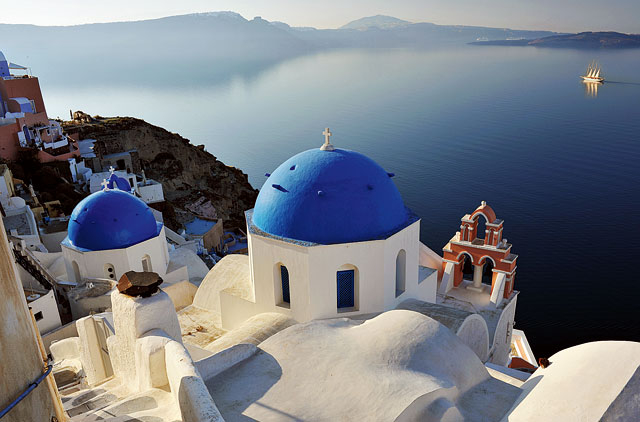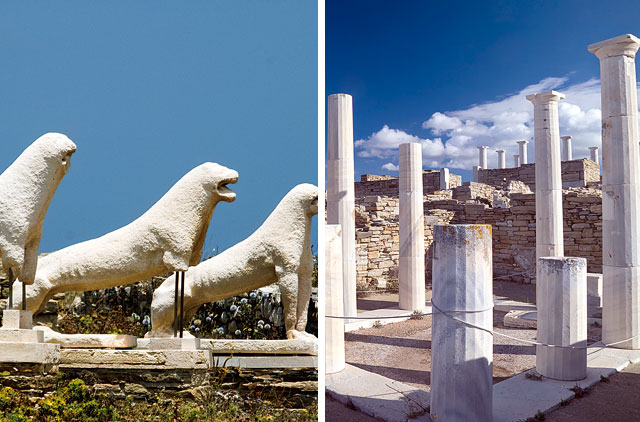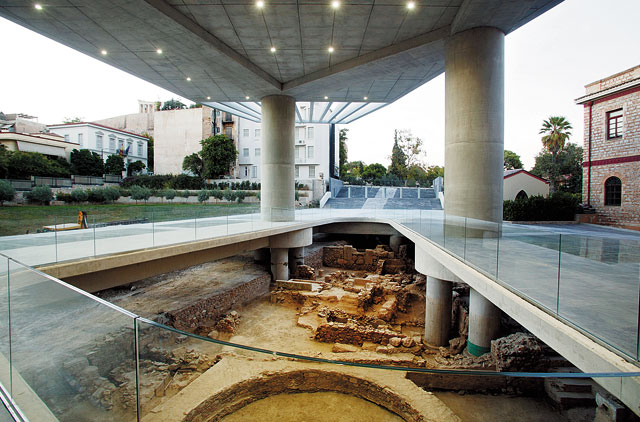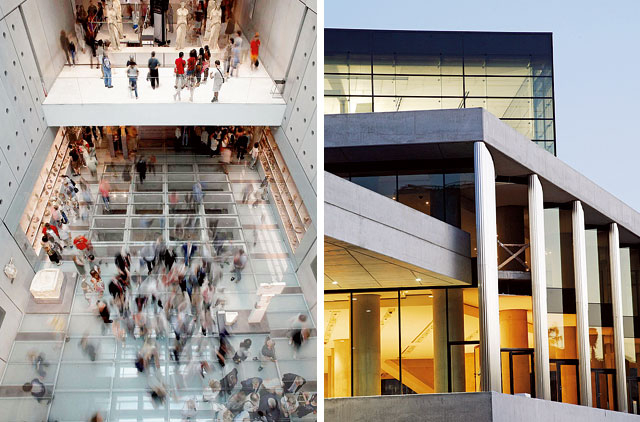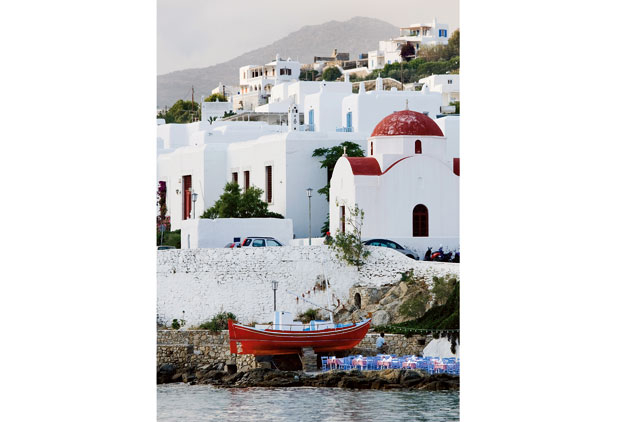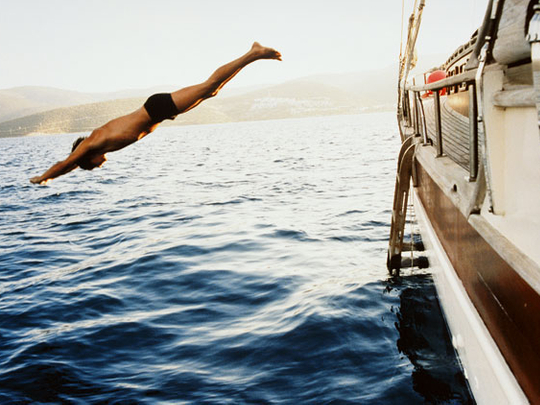
I've been enamoured of the Ancient Greeks ever since my father took me to see Jason and The Argonauts at the cinema when I was a boy.
Consequently, I became a sucker for any sword and sandal epic: Ulysses with Kirk Douglas, Helen of Troy starring Stanley Baker and Rossana Podestà, Hercules featuring Steve Reeves as the muscled hero, and countless others. So when the opportunity came to go on what was described as a ‘Weekend Mythological Tour of Greece,' I packed my suitcase faster than the descent of Icarus.
After a reasonably short flight from London, I arrived in Athens at 7pm, just as the city was winding down for the weekend. Yet contrary to what I'd been told, Athens' notorious traffic congestion and appalling pollution were non-existent. The residents, too, seemed oblivious to their current economic woes. Already impressed, I checked in at the Classical 2, Fashion House hotel, which is situated in the downtown area and features some 115 rooms designed by artists from the fields of illustration and graffiti art.
It's a hotel that ticked all the right boxes, such as laptop hire, free WiFi (hotels let themselves down when they charge extra for this) and an excellent breakfast. Each room offers a "city survival kit" that includes an Evian face spray, plasters and a big box of useful bits and pieces one normally forgets to pack.
With time to spare before dinner, I opted for a brisk walk around the inner city and discovered a bustling area full of arcane shops selling everything from birdcages to bean bags. Thankfully Athens has yet to succumb to the corporate-chain-store curse that has befallen almost every city in the world.
Next I headed for The Gazi - the site of an old gas works - that is now the city's centre of all that is hip and happening. It houses myriad bars, clubs and restaurants, while the central stage area often plays host to bands of every persuasion.
Hunger kicking in, I opted for a splendid fish supper of shrimp, sardines and squid at Sardeles on Persephoni Street (named after the daughter of Greek god, Zeus), followed by a few drinks at Bios, which is frequented by Athens' trendy art elite. It boasts an impressive minimal, Bauhaus-inspired interior and also functions as a café bar, gallery and performance venue.
The following day, I set off on a 40-minute flight to the beautiful Island of Mykonos, where I checked into the Mykonos Blu Hotel. An elegantly stylish establishment with its own beach, large pool and three restaurants, the accommodation comprises whitewashed suites, bungalows and villas that come with their own veranda and mini pools, affording just the right amount of seclusion.
I felt so at home that I was loathe to leave it for a tour of one of Greece's most famous archaeological sites - the island of Delos. Situated just two kilometres to the west of Mykonos, the island itself has been declared a national museum. Part of the Cyclades group of islands, it has been named by Greek mythologists as the birthplace of Apollo and Artemis, the twin sons of Zeus by Leto. Under first Macedonian and then Roman control, the island became the financial and trading centre of the Mediterranean, until its population - which included Italians, Phoenicians, Egyptians, Palestinians and Jews - rose to 25,000.
All had their own places of worship and enjoyed the island's duty- and tax-free status. As possibly the most egalitarian, free-thinking, cosmopolitan island in the world back then, it might be described as the New York of the 2nd century BC. But all was not to last. In 88BC Mithridates, the king of Pontus, in a revolt against Roman rule, attacked the island and killed or enslaved the entire population. Today it remains a remarkable place, heaving with taverns, shops, amazing mosaics and phallic statues, built circa 300BC and honouring Dionysus, the Greek god of madness and ecstasy.
After such an overwhelming feast for the mind, a swim was in order in the uncommonly clear sea that surrounds Mykonos.
Later I strolled around the alleyways and bars of the old town. A hive of whitewashed streets and tiny houses, Mykonos is certainly cute - so much so that even the addition of high-end designer stores like Chopard and Gucci interspersed between art galleries and tourist shops do not detract from its charm.
By 9.30pm the place was starting to live up to its "Greek Ibiza" reputation - the bars pumping out the sounds while men and women dressed to impress were taking to the streets in droves. My answer was to retreat to the Kounelas fish tavern and order a feast of sea bream, fresh sea urchins, a superb salad and home-made ice cream.
I ended my evening at the dockside bar, Caprice, resisting the temptation to join the beautiful people at the island's world famous house/disco clubs - such as Cabo Paradiso or Space Dance that begin at midnight and end at 6am - and retired gracefully to my hotel.
The next day, after a breakfast fit for Apollo, it was back on a plane and off to Athens, and from there by road to the southern tip of the Attica region. It is said that Aegeas, one of the kings of Athens, committed suicide here by jumping from the tip of the cape, thus giving his name to the Aegean Sea.
Arriving just in time for a late lunch at the marvellous Sounio Hotel, I was treated to a fantastic Japanese meal of sushi and sashimi - the freshest I have ever encountered. Afterwards, as sunset approached, a post-prandial hike was in order so I walked to the nearby Temple of Poseidon, god of the sea in Greek mythology. Situated right opposite the hotel atop a mighty hill, it took my breath away with its views of the sun setting over the sea. That night, back at the hotel, it was time for a steam bath followed by a delicious Cretan meal comprising100 per cent locally sourced produce.
Even though I awoke the next morning later than I'd liked, I still managed a pre-breakfast swim in the sea before I caught the bus in order to reach Athens in time for lunch. Next on the agenda was the climax of the weekend - a visit to the recently opened Acropolis Museum, situated on the sacred rock east of the Parthenon. Opened in 2009 and costing £110 million (Dh640 million) to build, it houses the greatest sculptural treasures of the ancient world, including works from the temple of Athena Polias on the Acropolis and parts of the Parthenon by Phidias, whose statue of Zeus at Olympia was one of the seven wonders of the ancient world.
As such, my expectations were huge and yet the glass, concrete and steel building, designed by ‘deconstructivist' Swiss American architect Bernard Tschumi, does not prepare you for the treasures within. As you make your way through the courtyard to the entrance, the building's sheer majesty unfurls like a blossoming rose. A glass floor that proffers an overhead view of the freshly unearthed remains of the merchant city of Athens leads you into the building and onto the ground level. After walking up the raised floor, past glass-lined walls, behind which stand familiar 2,500-year-old vases and sculptures (copies of which sell in every Greek tourist shop), it's up the glass staircase and into the towering Archaic gallery.
Little will prepare you for its sheer beauty. Marble sculptures of the likes of Alexander The Great and Emperor Heraclius stand alongside barbarian rulers and priests from the 2nd Century AD. The glass cases that typically house such priceless works of art are conspicuous by their absence.
Perfectly complementing the ancient statues are the brushed concrete pillars and walls, geometric overhead light panels and stainless steel wall cabinets, while massive windows allow lashings of natural light to flood the building. I was speechless.
After that, all that was left to do was to walk to the glorious top floor, known as the Parthenon floor. Here you can find what remains (in Greece, at least) of the famous Parthenon or "Elgin" marbles, roughly half of which were chiselled off by the British in the early 19th century and are now housed in the British Museum in London (to the ongoing consternation of the Greek people). In their place the museum has placed the rather unacceptable plaster casts - cheekily sold to them in the 1840's by the British Museum - next to their originals.
That night, still reeling from the enormity, beauty and brilliance of the depositary, all that was left was to dine on the roof of the sumptuous five-star King George Palace Hotel and toast Athens and its people for coming up with the finest museum I have ever visited.
A trip that had the very best of everything - memorable food, incredible archaeology, the finest works of art from the cradle of Western civilisation set against cutting-edge architecture and fantastic night life -the weekend was an eye-opener and one that I could happily repeat tomorrow.



